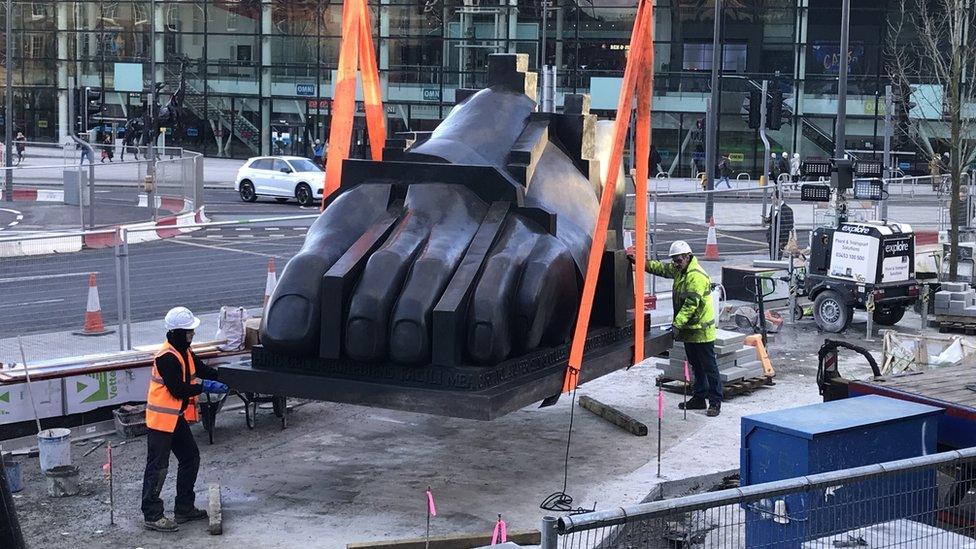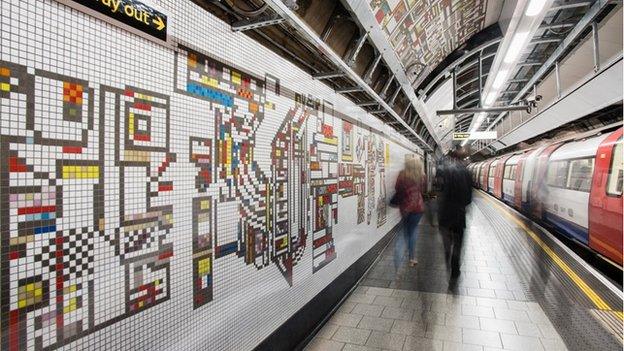Edinburgh's giant Paolozzi sculptures back in original location
- Published

The sculptures were removed for two years so the area could be redeveloped
A three-part sculpture depicting a giant foot, hand and ankle has been returned to its original home in central Edinburgh.
The bronze artwork, by artist Eduardo Paolozzi, was moved from Picardy Place more than two years ago to make way for redevelopment of the area.
The sculpture, known as the Manuscript of Monte Cassino, was given to the city by Sir Tom Farmer in 1991.
Its return marked a "milestone" for the area, Edinburgh City Council said.
The council moved the "much-loved" works in December 2017 to make way for the redevelopment of the junction between Leith Walk, York Place and Broughton Street.
They have been placed in the gardens between London Road and Hillside Crescent for the last two years.
The sculptures symbolise the destruction brought about by war while offering a message of peace, hope and regeneration.

Sir Tom Farmer gave the artwork to the city in 1991
Edinburgh City Council's transport and environment convener Lesley Macinnes said: "It's great to see these striking sculptures returned to Picardy Place, where they were originally placed when they were gifted to the city almost 30 years ago.
Ms Macinnes said long-term improvements to the area would deliver better pedestrian and cycling links and improved public transport access.
"The Paolozzi sculptures will provide a stunning focal point once it is complete," she added.
Sir Tom Farmer said: "I'm really pleased that the Paolozzi sculptures are returning to Picardy Place to sit within the piazza being created by the City of Edinburgh Council in front of St Mary's Cathedral.
"I appreciate that the contractor still has some works to do around the sculptures this month, so now look forward to viewing them in their new surroundings when this work is complete."
A public consultation on the future of the Picardy Place site will be held later this year.
- Published28 July 2015
